The Church and Benedictine Monastery
The Church and Benedictine Monastery on St Mary’s island on Mljet are among the oldest church complexes in the Adriatic. This valuable monument of Croatia’s Romanesque culture belongs to the Diocese of Dubrovnik and is open for visitors all year round. It is located within the National Park and if you are visiting the Island this is the monument that shouldn’t be missed.
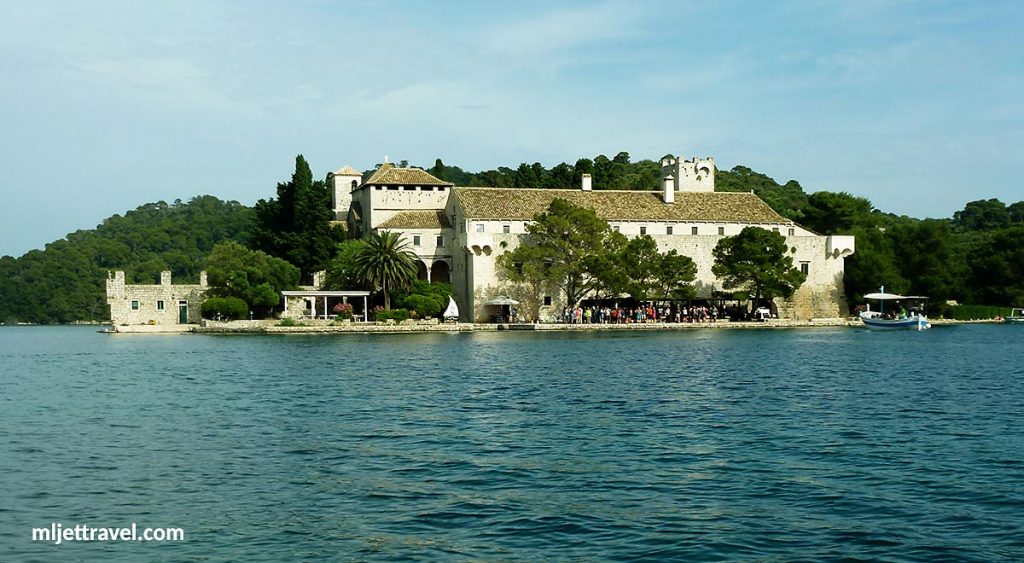
The south facade of the Monastery
The history of the Church and Monastery
The history of the Church and Monastery dates from 1151 when Benedictine monks from Puglia, a southern region of Italy on the Gargano peninsula, known as Pulsanesi Eremites were given the island of Mljet as a present or donation by Duke of Zahumlje, the current ruler of the modern-day regions of Herzegovina and southern Dalmatia.
The Benedictine monks, who belonged to The Abbey of St May’s of Pulsano (Santa Maria di Pulsano – hence the name) built the Romanesque monastery and church of St. Mary on the islet of St. Mary on the ruins of the already existing sacral monument remains. The first mention of the Monastery dates from the 1220s when St Mary’s Monastery’s name is mentioned in the official documents of the time.
The complex was rebuilt and extended during the 15th and 16th centuries when Renaissance parts were added to the existing building.
The whole monastery complex was built in the style of a Renaissance villa and garden. The church is very similar to the Santa Margherita in Bisceglie, Puglia, Italy, which was built in the same period (1197). The tower and the surrounding walls that are encircling the monastery, church, and garden were created late in the 17th century.
It is a known fact that at the end of the 14th century, the monastery was used as a quarantine, the first one in Croatia, as the monks were also practicing pharmacists.
At the time, the whole of St. Mary’s islet was an olive grove, with about a hundred olive trees that are still growing there.
The Benedictines were in the possession of the Island and Monastery until 1808 when they, as well as the Republic of Ragusa, were abolished by Napoleon Bonaparte. They left on 31.05.1808 and since then the monastery property became the school foundation.
Fortifications:
Due to the very high risk of pirate attacks, the whole monastery complex was fortified by massive walls and towers.
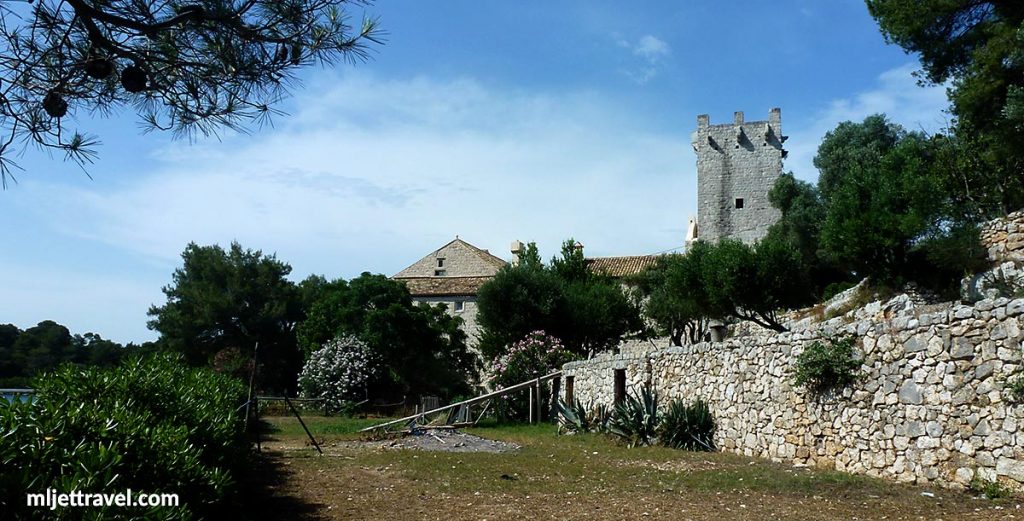
Olive grove and garden with views over tower and Monastery walls
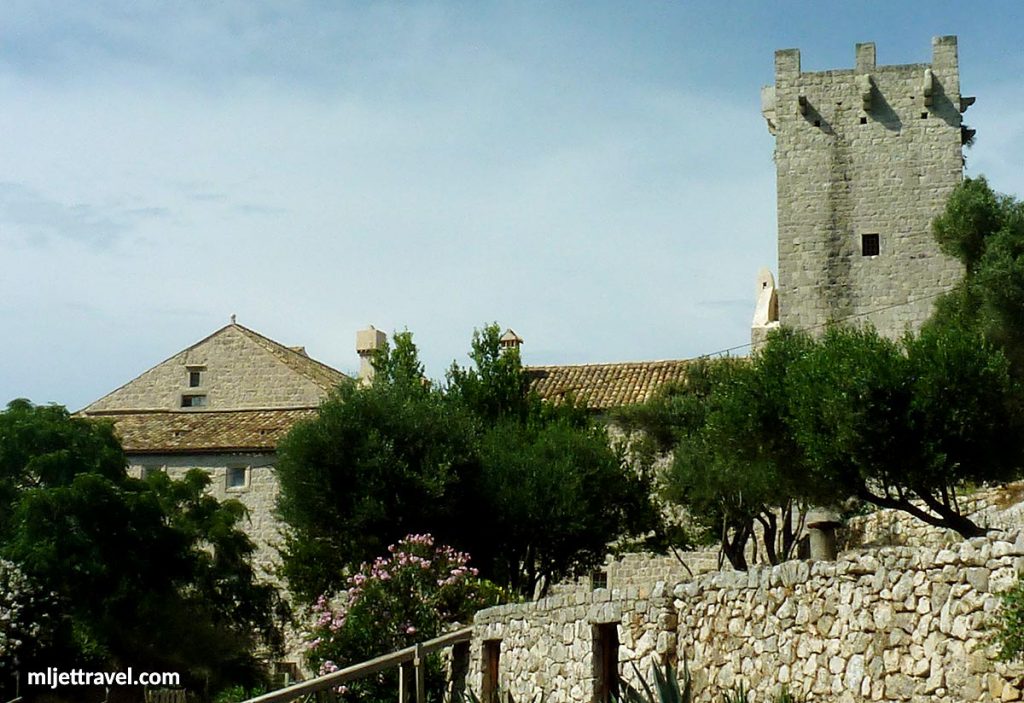
Tower and walls of the Monastery
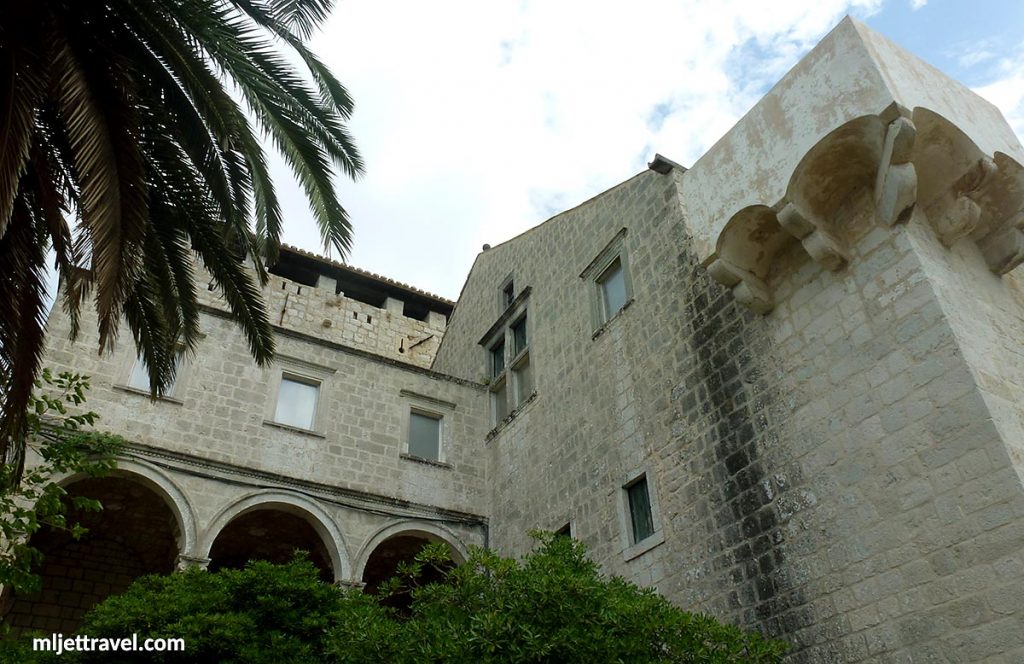
Strong and massive walls
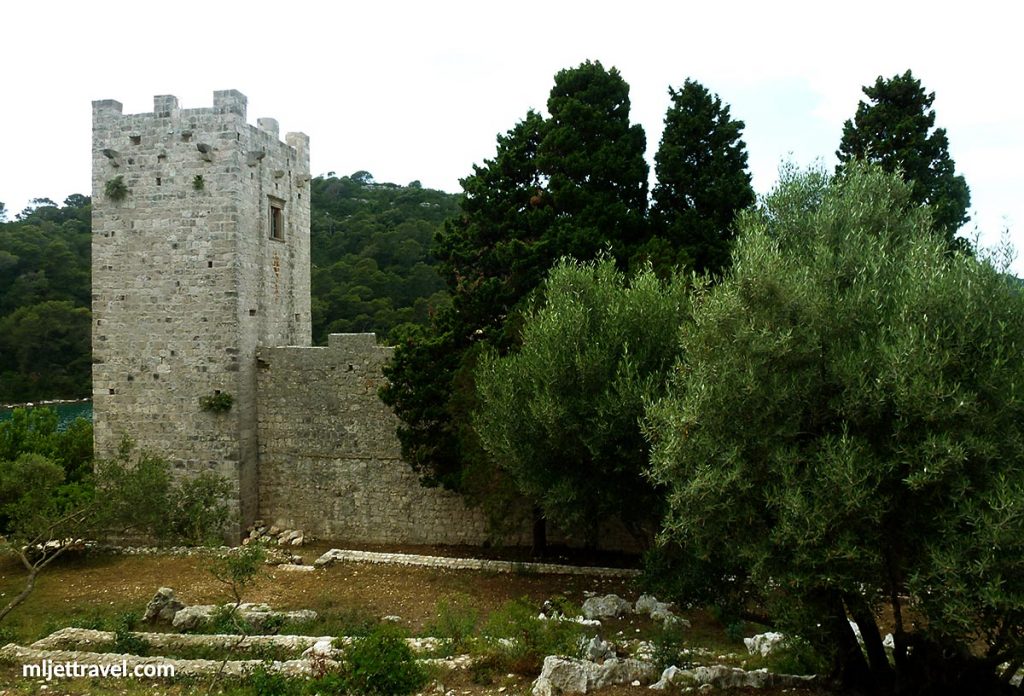
Tower and walls viewed from inside the Monastery grounds
Church:
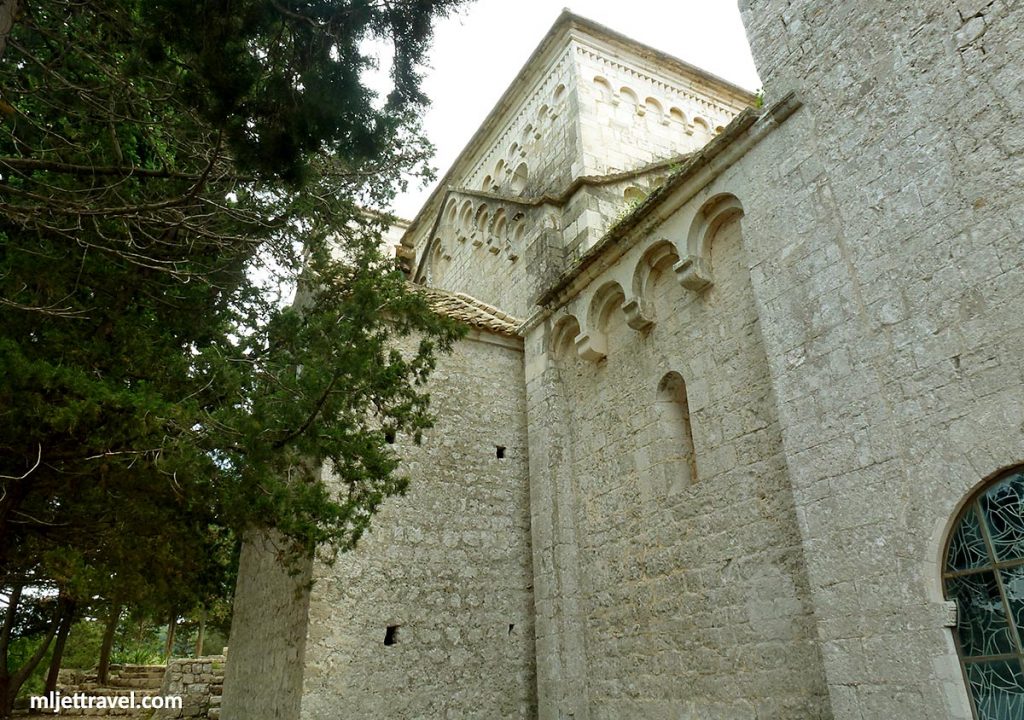
The side facade of the Church
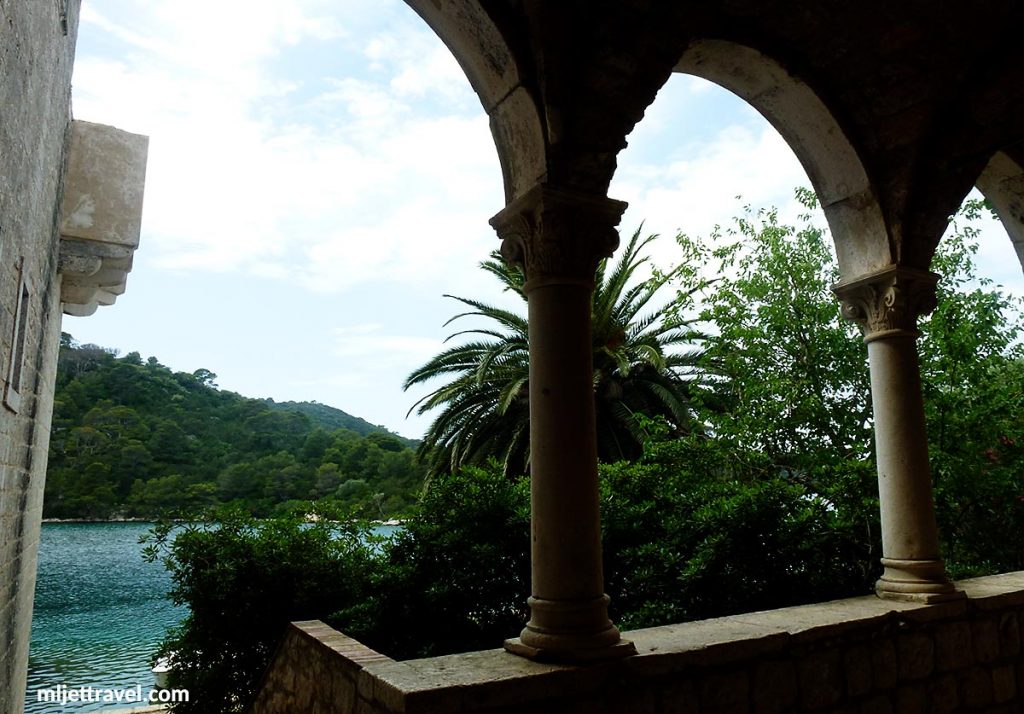
The columns in front of the church portal
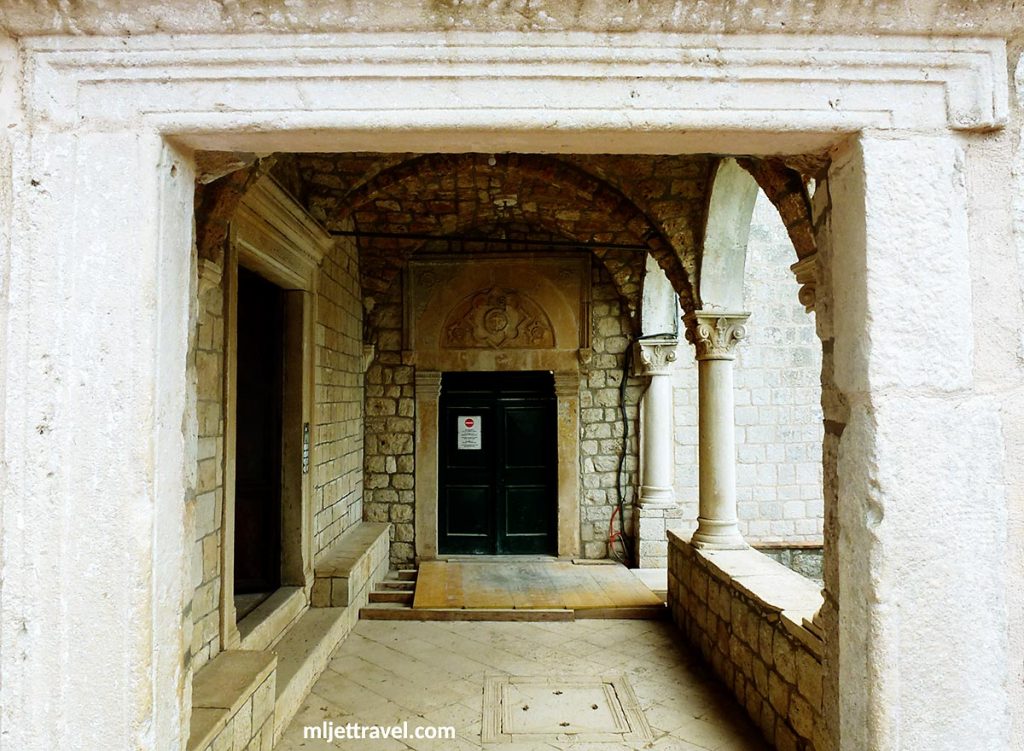
The exterior of the Church and Monastery entrance
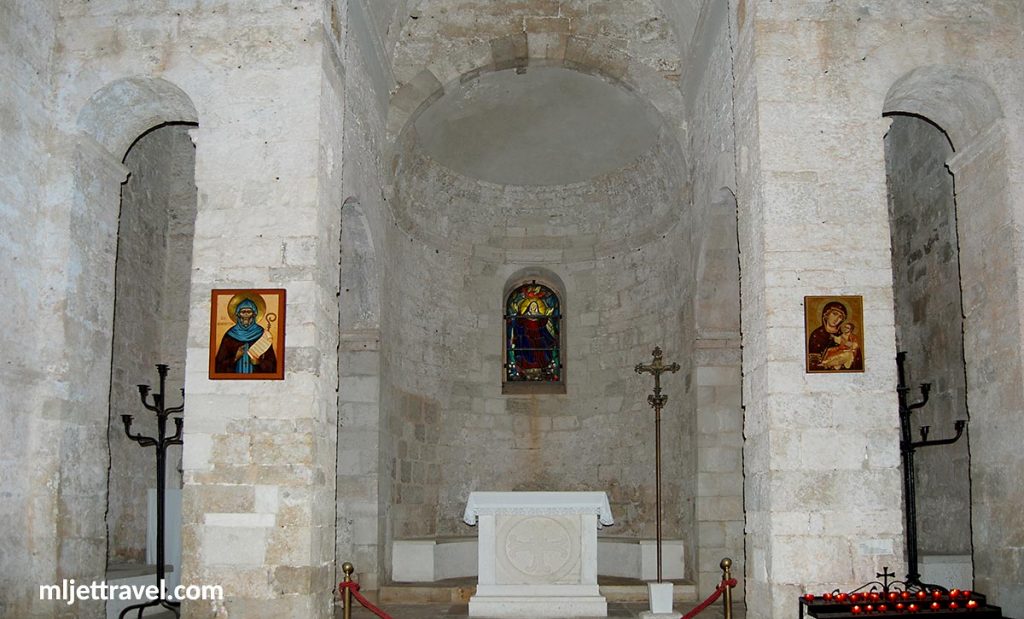
The interior of the Church
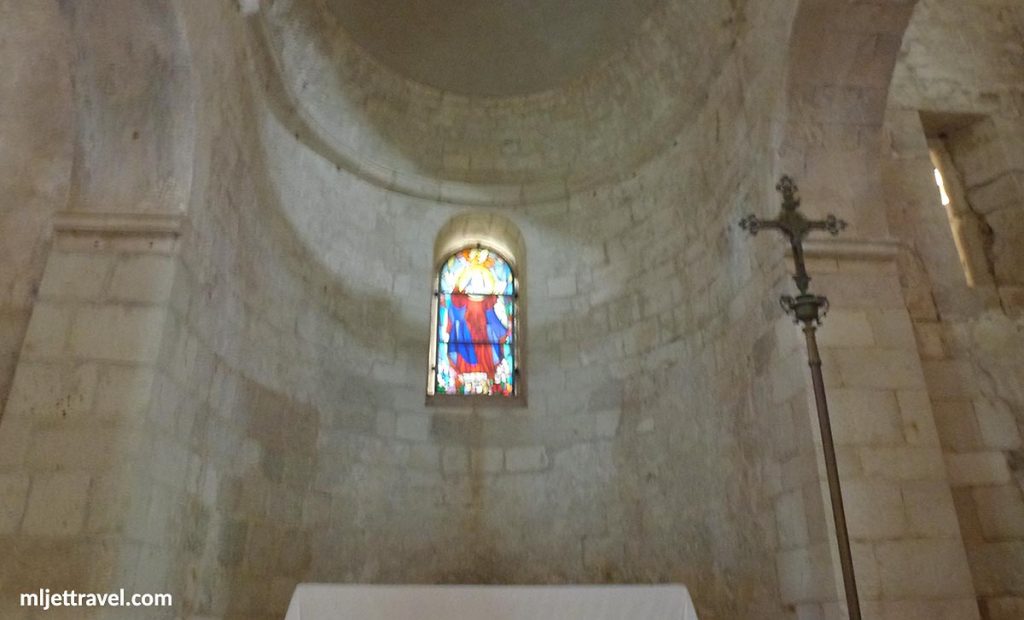
Inside the Church
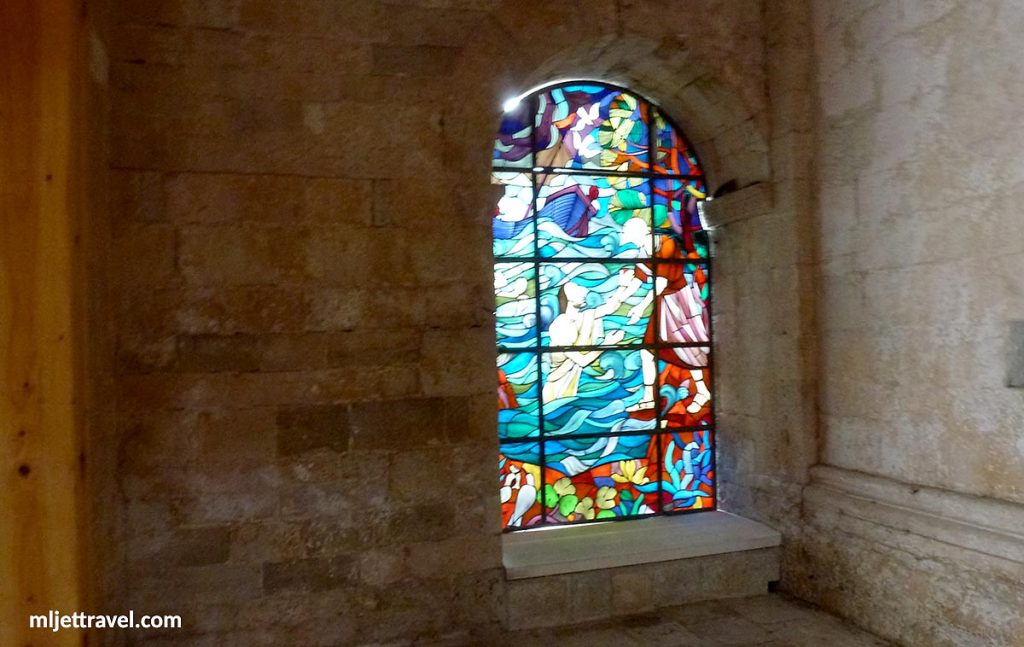
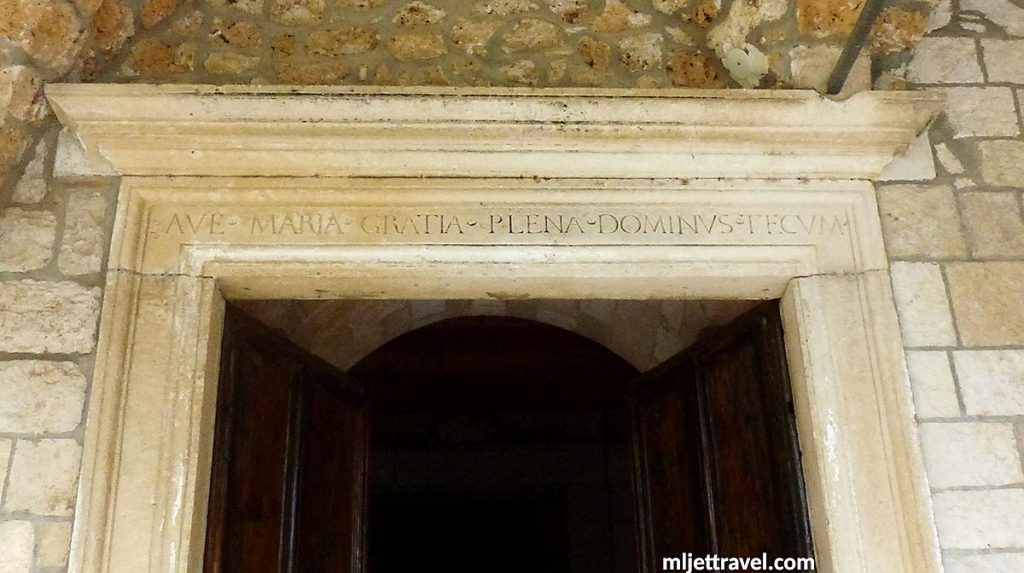
Church portal: Áve María, grátia pléna, Dóminus técum
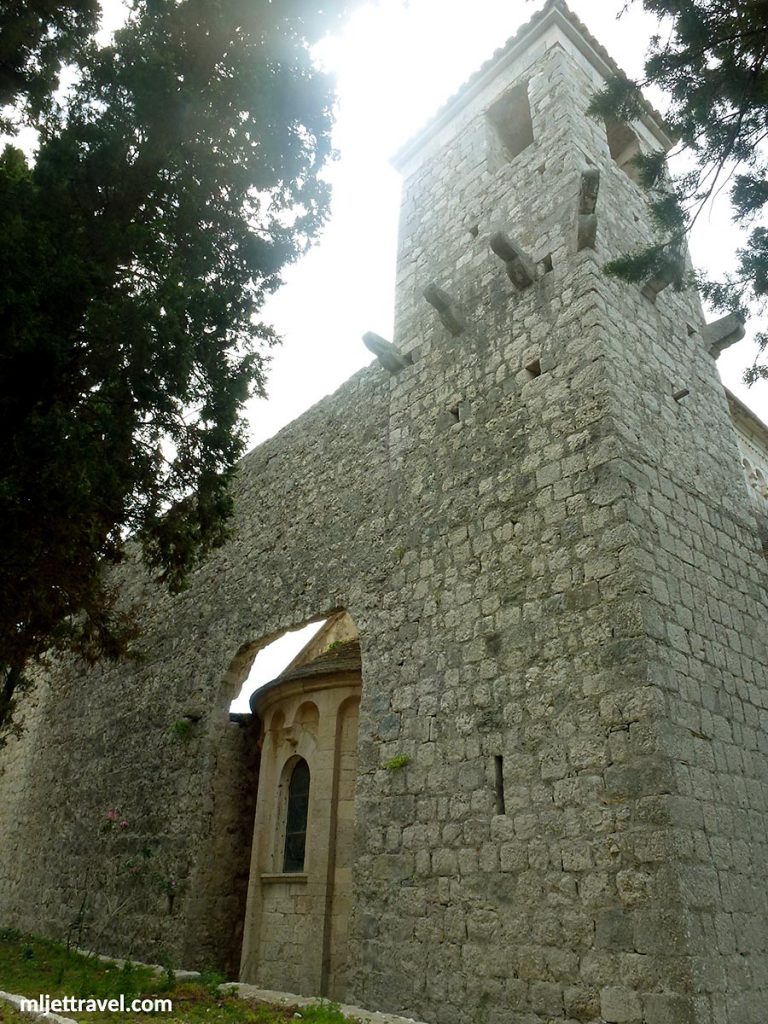
The church inside the walls
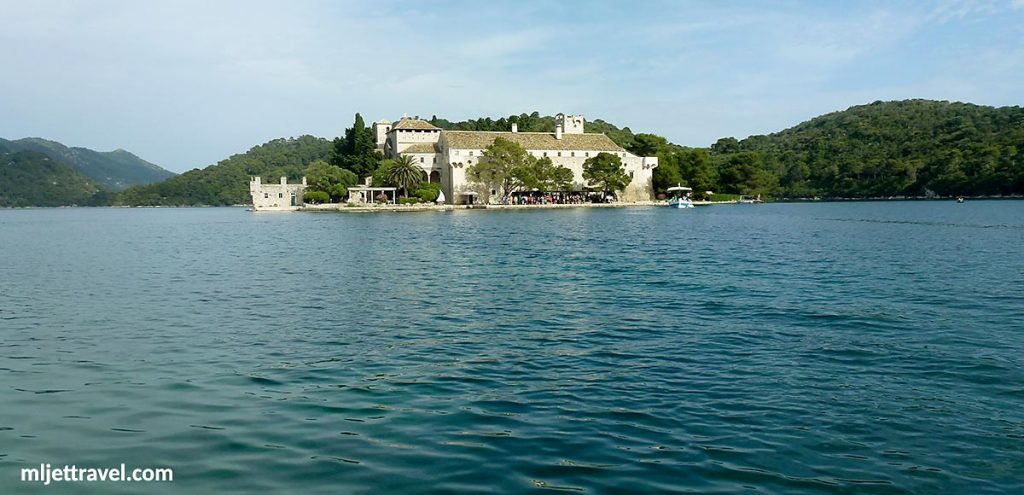
Views over the Monastery from the shore of Large Lake.
Other pages with related info:
- St Mary’s Islet
- Getting to St Mary’s islet, Mljet National Park
- Historical photos of the Church and Monastery
- Birds Eye View of the Islet and Monastery
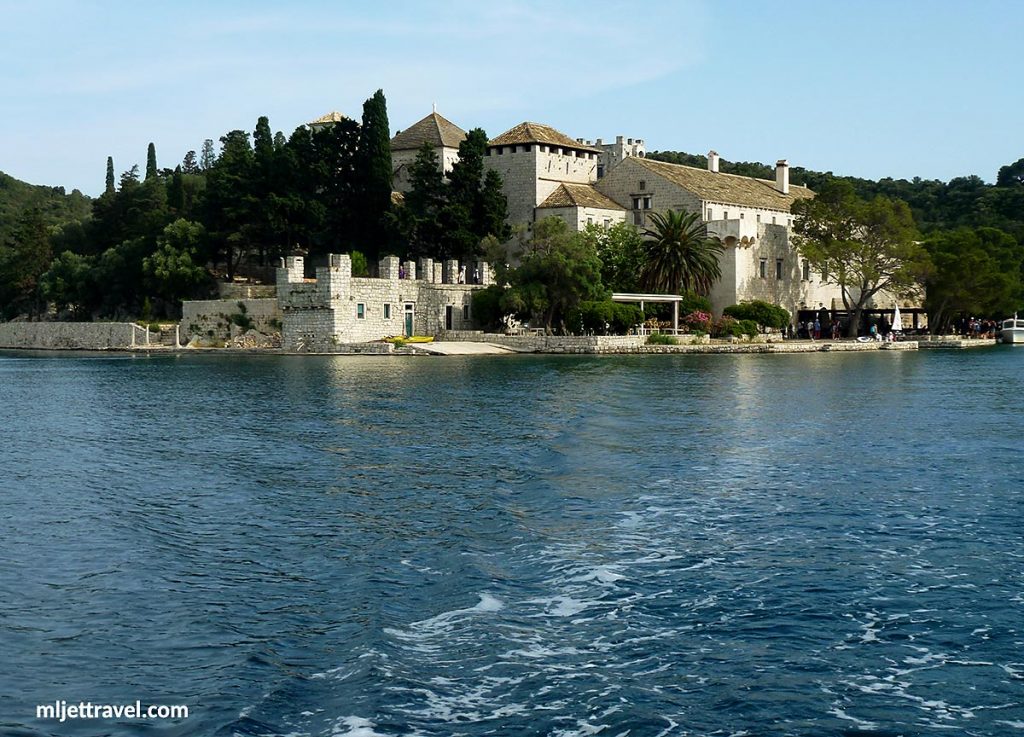
West facade of the Monastery seen while leaving the Islet.
Location Map and getting here:
Here is some info about how to get here from Split and from Dubrovnik. Also, consult the below map for location details of this amazing historical spot.
GPS: 42.769011, 17.359641